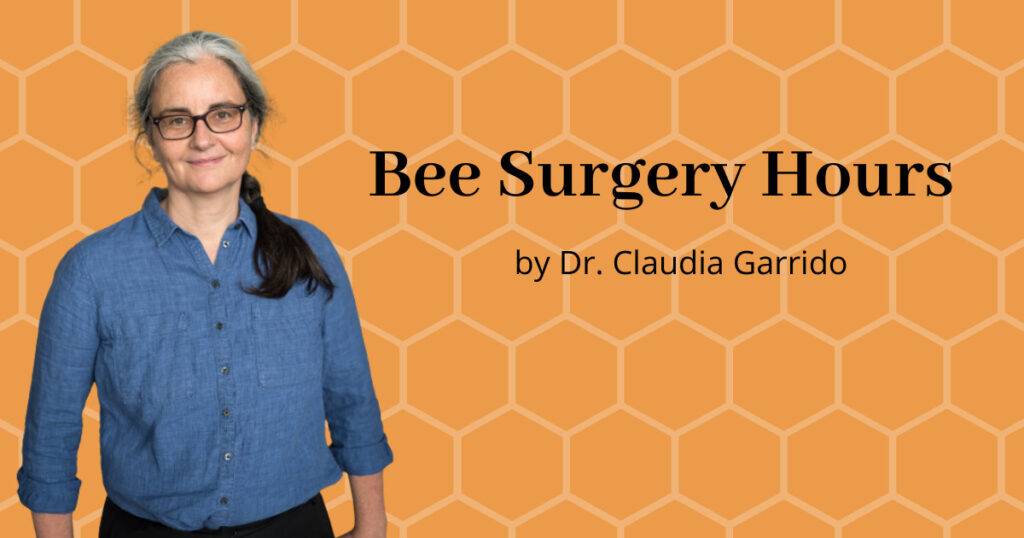Varroa resistant bees are the big hope for many beekeepers. I’ve never made a secret of what I think about this – and also given some reasons in a previous blog post. My main criticism being that varroa resistance breeding is sold as a final solution very often. And this is taking people for fools or not understanding biology. Because living systems (like the relationship between honey bees and varroa mites) aren’t static. They change constantly, though very slowly.
So, even if one day we’ll have “varroa resistant bees”, this will still mean to continuously continue the selection. The work, the effort, the observation.
Already some time ago, however, I noticed that the discussion was going into the direction of Integrated Pest Management. Putting breeding efforts into the level of cultural measures, i.e. habits or practices that beekeepers use to fight varroa mites.
Like that, we have a good foundation for a real discussion.
Searching specific cues
There have been many claims of varroa resistant bees in the past. In some specific situations and conditions, a local or regional population managed to survive without treatments. Great, that means that there are some adaptations that help honey bee colonies to resist the parasite. But what are these traits? Why do they resist? And are these traits genetically fixed, so that breeding could reproduce them? All these are questions that breeding programs don’t answer or even think about.
But I wanted to stay positive and open-minded… So, let’s look at an example. One of the traits that relate to varroa resistance is something called “varroa sensitive hygiene” or VSH. This means that the workers recognize heavily infested brood cells, uncap them, remove the brood and all cell content. With the mites, obviously. But how do the workers recognize these brood cells?
The experimental set-up
That’s the point where science comes into the picture. Because scientists don’t only think hard and then claim the truth. We verify things by doing appropriate experiments. And that’s what Fanny Mondet and her group did: They put highly infested brood combs into colonies that were selected for VSH. Previously, they had marked open or empty cells on transparent sheets, so that they could recognize any changes. After an hour, they brought back the comb into the lab and marked the cells that were newly opened or uncapped. This was repeated hourly for 48 hours (at least that’s what I understand from the paper). After this time, they sampled the bee pupae, as well as the mites that they found in the targeted cells. This was for analysing the number of mite offspring, the DWV load as well as the pheromone profiles of the pupae. All this in more than 400 samples, so that’s quite a piece of work.
Traits of varroa resistant bees
From this data-set, the scientists could see, that the workers especially targeted brood cells with more varroa offspring. They also found that the bees removed brood that was delayed in its development – and these pupae had abnormal pheromone profiles. Meaning they smelled a bit funky. So, the workers recognised this “funky” smell and removed these pupae. By this, they interrupted the reproductive cycle of the varroa mites – and reduced their reproductive success. This means that the infestation levels grow slower.
Reread that last sentence: The infestation levels grow SLOWER. The mites aren’t completely eliminated by this process. That’s an important nuance and something many neglect in the discussions about varroa resistant bees. These traits aren’t absolute, they don’t solve everything by a miracle. They’re an element that help honey bee colonies to resist varroa infestation a little bit better. Even with VSH the infestation level could get high enough to kill a colony. It will just take more time. It doesn’t mean that you won’t have to treat ever again.
What’s the direction for “solving” the varroa issue?
So, to come back to what I said at the beginning: Varroa resistance breeding, be it by VSH or other traits isn’t a final solution. Neither are treatments. They’re elements of good management of honey bee colonies, aiming at keeping them healthy. In my opinion, we can’t do without treatments. We may have to treat less often, if varroa resistant bees become more widespread. Or we may have to change the schedules to react to changing conditions, like warmer winters which gives varroa mites longer periods to reproduce.
But, and listen well, we will never “solve” the varroa issue by a single magical wand. There’s no treatment that eliminates 100% of the mites. There’s no single trait that makes bees varroa resistant. Biology is complex. Even if it’s about small organisms like mites and bees.
The direction to go, therefore, for reducing colony losses and better manage honey bee health is simple, but needs some effort. It’s called good practices. Treating as much as necessary, but as little as possible. And if this is less frequent because of some traits that we can select for: Perfect. But there won’t be a once-and-for-all solution.


